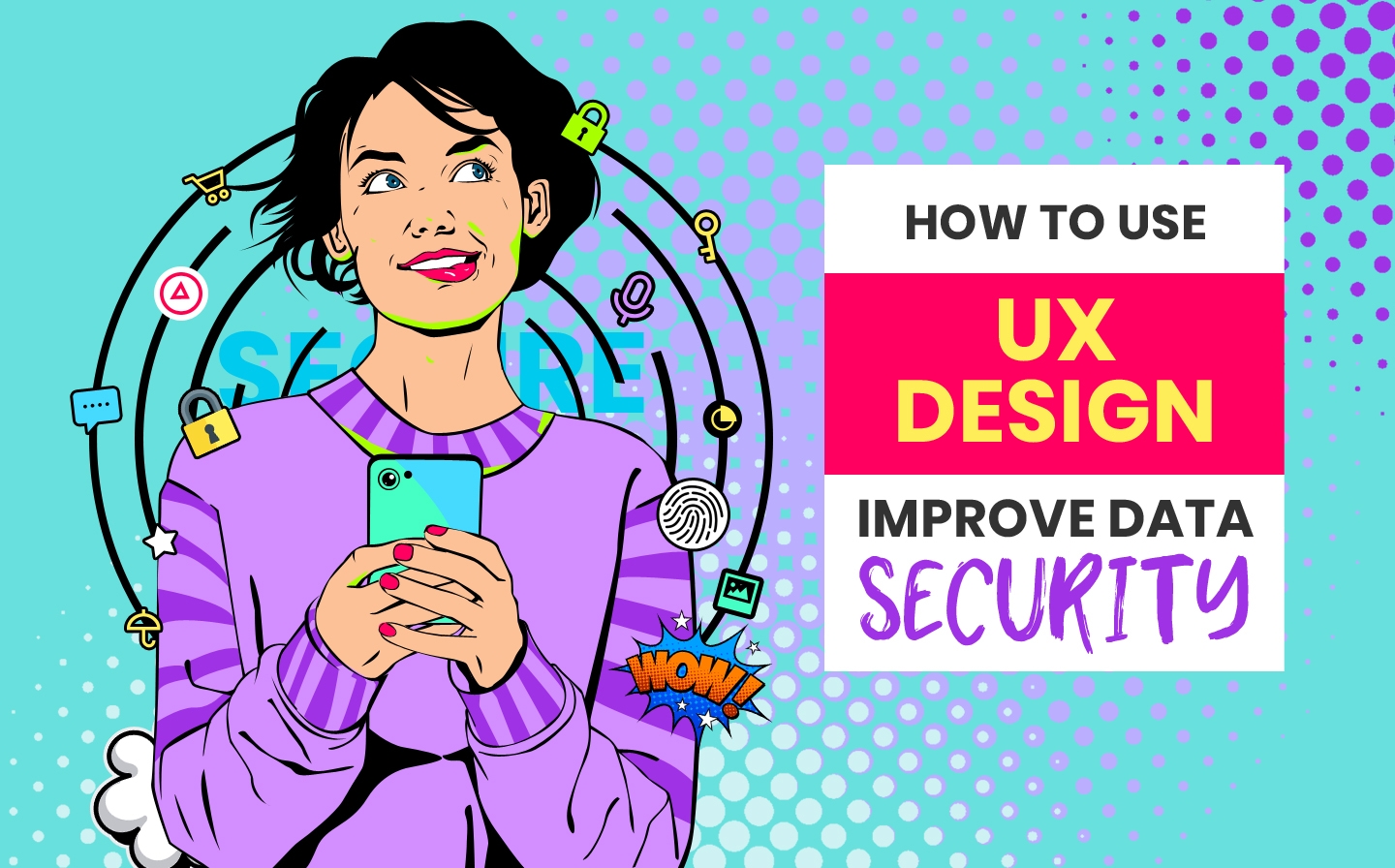Whether we’re working, studying, having fun, or shopping, the web is now the way to go. Many people, however, aren’t aware of the true nature of cyberspace. As a result, users regularly find their data gets shared without their knowledge and consent. This is both annoying and dangerous.
This issue is known as data security and is becoming more and more important as our lives become ever more digitized. The process of creating solid data security systems is the responsibility of UX designers.
UX Design Basics
UX (user experience) design involves a high degree of creativity, intelligence, and skill. Many people use the terms UX and UI (user interface) interchangeably, but there are some important differences.
The focal points of UX design include:
- How users interact with a product or service (site or app, in this context)
- The process of navigation around a site or app
- The behind-the-scenes working of a site/app
On the other hand, UI design focuses on the appearance of a site or app, ease of access, and the graphics, sound, and animation in an interface.
Data security falls under the UX umbrella rather than UI design.
Users want to feel safe and secure when interacting online, rather than worrying about their sensitive information falling into the wrong hands. Even when people aren’t sharing “top secret” info online, it’s disturbing to realize how small details of your life are easily stored in cyberspace without your knowledge.
What Is Data Security?
Data security comprises many different elements, including:
- Preventing hackers and other cybercriminals from accessing private information
- Creating both physical and digital safeguards against cybercrime
- Managing access controls and authentication
- Data encryption and data erasure
- Redaction of sensitive information and data masking
- Mobile app security
- Web browser security
How To Improve Data Security
There are many methods of improving data security. Most of them deal with data collection and how this management can benefit both users and sites or apps.
Privacy By Design
Developed by Ann Cavoukian in the 1990s, Privacy by Design is an approach to data security and other elements of systems engineering. Its purpose is to embed privacy and integrity into the system in the design process. While the approach has attracted criticism, it’s now incorporated into official regulations and is useful when dealing with data security.
Seven principles constitute Privacy by Design:
- Proactive, not Reactive; Preventative not Remedial
- Privacy as the Default Setting
- Privacy Embedded into Design
- Full Functionality—Positive-Sum, no Zero-Sum
- End-to-End Security—Full Lifecycle Protection
- Visibility and Transparency—Keep it Open
- Respect for User Privacy—Keep it User-Centric
Each principle was developed with the safety and security of users in mind. And while they may seem somewhat vague to critics, they are still a good foundation upon which to build.
We’ve used the principles of Privacy by Design to put together seven tips for UX designers pursuing good data security.
Seven Tips To Improve Data Security
- Proactive Not Reactive
In data security, the saying that prevention is better than cure has never been truer. Therefore, saving as little data as possible is a great first step in keeping information safe.UX designers should consider this from the beginning of their design process and develop systems engineered to protect users’ data. - Privacy As The Default
Most people online are not security experts, let alone cyber-security. As a result, many users assume websites are safe and then get conned into entering confidential information like credit card details. For UX designers, one way of protecting users is to stop pre-selecting options in checkboxes to have a clear choice. - Privacy Embedded Into Design
It’s far easier to develop a safer system from scratch than retrofitting security features. For users, it can sometimes feel like websites and apps are designed to exploit them. It’s up to UX designers to create systems that put data security first rather than as an afterthought. - Full Functionality
The idea that UX designers have to choose between privacy and security is a mistake and an outdated notion. Designing a website or app that keeps users’ data secure makes everyone’s lives easier. It’s just a case of embedding safeguards into the product right from the start. Your starting point should be to minimize the amount of data you collect, as keeping things small makes tracking data far easier. - End-to-end Security
One issue with data security is that systems have the ability to store information indefinitely, making the chance of data theft much higher. A solution for UX designers is to ensure that data completes its life cycle—purge the data once it’s served its purpose.When it comes to accounts created by users, having a clear policy regarding canceling these accounts is helpful. For example, if a user deletes their account, their data will only get stored for a week or two, at which time they can reinstate their account. After that period, their data is destroyed. - Visibility And Transparency
Some users aren’t knowledgeable about data security, but that doesn’t mean they don’t need to know. A good way of boosting data security is to keep users informed of the behind-the-scenes workings of a site or app. For example, users filling in an online form should know how the data they enter will be used and choose to opt out. In addition, it must be clear whether or not third parties will have access to the data. - Respect For User Privacy
The last principle of Privacy by Design (respect for user privacy; keep it user-centric) is pretty self-explanatory. The job of a UX designer is to create a functional product (a website or app, in this context), and these days, “functional” means user-friendly and secure.
Final Thoughts
Having thorough data security measures should be non-negotiable for UX designers. Implementing these measures right from the start of development is a beneficial system for all involved.
So, don’t ever think that security can come second. Instead, make it a priority, and your users will take notice!
If you need further help with UX Designs, you can contact Web Digital. Aside from offering web design services, we also provide web hosting and other plans. Wed Digital is a well-established web design agency in Auckland, and we can help you with your website design needs.





















